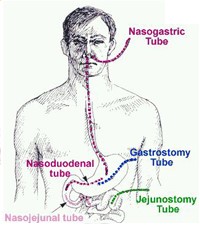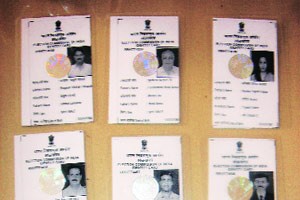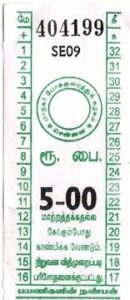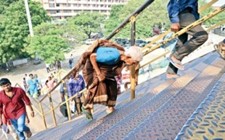Sometimes, a bedridden person may not be able to ingest food through their mouth. This can be due to various reasons, from refusing to eat (in some cases of dementia) to inability to swallow due to being comatose, having neurological problems, having obstructions in the food canal or other similar problems.

Under such circumstances Doctors advice enteral feeding. Enteral feeding is defined as delivery of a nutritionally complete feed, containing protein, carbohydrate, fat, water, minerals and vitamins, directly into the stomach, duodenum or jejunum. Basically, what this means is that the doctors will insert a tube into the body and you will have to use that tube as the means to feed the patient. The food, in this case, would be a nutritionally complete meal replacement powder such as Ensure, Fresubin or some other brand.
The feeding tube can be inserted in a couple of different ways. Given below is a brief layman’s understanding of them.
Nasogastric intubation
In this case, the doctor will insert a narrow bore tube, called a Ryles’ tube or a nasogastric tube, through one of the nostrils into the stomach or duodenum(which is the part of the small intestine just after the stomach). Whenever feeding is required, the desired quantity of the meal replacement solution (freshly prepared) can be injected into the tube slowly. Alternately a bag of the food can be attached to the tube and the food released slowly over an extended period. It is usually recommended that this method is used for no more than six weeks at a time, but if no other option is available, this can be used indefinitely subject to the patient not suffering any major discomfort.
This type of intubation is contra-indicated under some conditions such as
-High risk of aspiration
-Gastric stasis
-Gastro-oesophageal reflux
-Upper gastrointestinal stricture
-Nasal injuries
-Base of skull fractures
Percutaneous Endoscopic Gastrostomy
Percutaneous endoscopic gastrostomy (PEG) is an endoscopic medical procedure in which a tube (PEG tube) is passed into a patient’s stomach through the abdominal wall. In some cases, the tube is extended into the duodenum or the jejunum. This method for enteral feeding is indicated when such feeding is required for extended periods of time measured in years. To install the PEG tube, an invasive operation is required. In one popular method, an endoscope is inserted through the mouth or nostril into the stomach and a light flashed to identify the area where the incision needs to be made. Then an incision is made in the abdominal wall and the stomach and the tube inserted into the stomach. The stomach is then stapled or sutured to the inner abdominal wall at that point so that it does not move and dislodge the tube. The operation is relatively straight-forward and is conducted very often under local anesthesia nowadays.
Since an operation is required, this is not suitable for patients too weak to undergo operations under local or general anesthesia. In addition, this operation becomes difficult if the patient does not have the ability to swallow as that makes it difficult for the endoscope to be inserted.
PEG reduces dramatically the possibility of aspiration (food coming back up from the stomach) and reflux and is ideal in cases where the need for enteral feeding is for a prolonged period.
If your loved elder is unable to eat normally, do consult your doctor regarding enteral feeding.
 CHENNAI: Confined to an old age home is no handicap for exercising one’s democratic right in the election. Not any more. Senior citizens at the YWCA who were hitherto unable to vote were delighted on Tuesday, thanks to the District Election Officer (DEO), who distributed voters ID for around 35 inmates.
CHENNAI: Confined to an old age home is no handicap for exercising one’s democratic right in the election. Not any more. Senior citizens at the YWCA who were hitherto unable to vote were delighted on Tuesday, thanks to the District Election Officer (DEO), who distributed voters ID for around 35 inmates. Any form of incontinence, though may not be fatal, can surely rob the life of the affected.
Any form of incontinence, though may not be fatal, can surely rob the life of the affected. Apart from availing tokens for free bus travel that will be distributed to senior citizens at 42 bus stands and depots across the city, senior citizens can also download forms at www.mtcbus.org.
Apart from availing tokens for free bus travel that will be distributed to senior citizens at 42 bus stands and depots across the city, senior citizens can also download forms at www.mtcbus.org. When a loved one gets hospitalized, there are Doctors and nurses to look after them while they are under their care. Despite that, the period of hospitalization can be very taxing, both emotionally and physically for the family members.
When a loved one gets hospitalized, there are Doctors and nurses to look after them while they are under their care. Despite that, the period of hospitalization can be very taxing, both emotionally and physically for the family members. One of the few roads in Chennai with a footpath. Notice how there is construction debris all over the pavement and the two ladies are being forced to walk on the road, risking the prospect of being run over.
One of the few roads in Chennai with a footpath. Notice how there is construction debris all over the pavement and the two ladies are being forced to walk on the road, risking the prospect of being run over. The picture on the right shows the true story. Look at how everyone is running to get into the bus. Notice the slower ones struggling to reach the bus. Imagine now that you are an old person incapable of running!
The picture on the right shows the true story. Look at how everyone is running to get into the bus. Notice the slower ones struggling to reach the bus. Imagine now that you are an old person incapable of running! This picture with the bent over old lady is a picture of the foot over bridge at the Chennai Central Railway station. The picture says it all.
This picture with the bent over old lady is a picture of the foot over bridge at the Chennai Central Railway station. The picture says it all. At first, Kannan S. thought there was something wrong with his eyes. He would feel exhausted when out in the sunlight, and found that his handwriting had begun to taper. Later, the resident of Nolambur was diagnosed with Parkinson’s disease, a progressive disorder of the nervous system that affects movement.
At first, Kannan S. thought there was something wrong with his eyes. He would feel exhausted when out in the sunlight, and found that his handwriting had begun to taper. Later, the resident of Nolambur was diagnosed with Parkinson’s disease, a progressive disorder of the nervous system that affects movement.